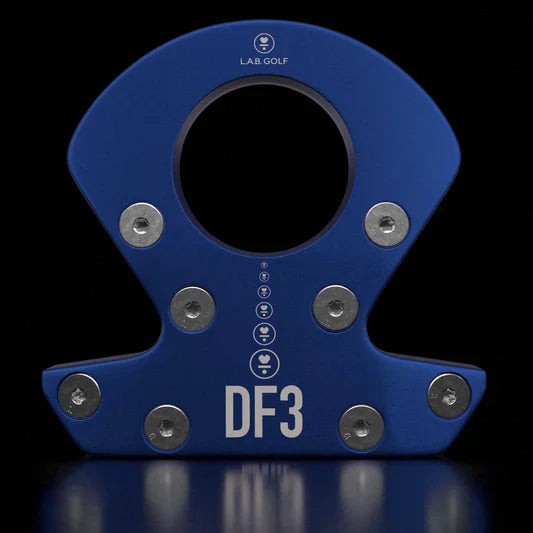Golf, for all its traditions, is always one tweak away from an earthquake. A new shaft. A new driver head. A putter that looks like it belongs on the set of Star Wars.
That last one? Enter LAB Golf.
Two weeks ago at Oakmont, J.J. Spaun stood over a 64-foot birdie putt on the final hole of the U.S. Open. He struck it, and for a few breathtaking seconds, the ball rolled pure, tracing a perfect line before it dropped into the cup. Spaun threw his arms skyward. The crowd erupted. And just like that, LAB Golf became a major champion.
It was the first men’s major won with a LAB putter—a defining moment for a company once dismissed as a curiosity. Spaun’s victory didn’t just win him the U.S. Open. It blew open the conversation about how we think about putting altogether.

LAB—short for Lie Angle Balance— wasn’t born in some sleek OEM R&D lab. It was born in a garage, out of frustration and the yips.
The story starts with Bill Presse, a former mini-tour pro who’d practically quit competitive golf because he couldn’t make a putt to save his life. He’d tried everything. Fat grips. Left-hand low. Different stances. Nothing worked. So in 2015, he began tinkering with prototypes, chasing an idea that sounded half-crazy: a putter that would naturally stay square without the golfer manipulating it.
Presse’s breakthrough was realizing that if you balance a putter’s center of gravity precisely along its lie angle, you eliminate torque. Translation: when you let go of a LAB putter, the face doesn’t swing open or slam shut. It just sits there—square.
In 2016, the company—then called Directed Force Putters—launched its first model: the Directed Force 1.0. It looked like a spaceship. Some folks laughed. Others rolled a few putts and realized something unsettling: the ball went exactly where they aimed.
Since then, LAB Golf has expanded its lineup with the DF 2.1, Mezz.1, and Mezz.1 Max—each built on the same zero-torque principle. While LAB remained a niche brand for years, Spaun’s bomb at Oakmont put them squarely in the spotlight.

Adam Scott, known for his pure stroke and classic taste in equipment, has also experimented with LAB putters, lending credibility to a brand that once seemed destined for the fringes.
LAB putters aren’t cheap. And they aren’t traditional. But the company is transparent about its mission: build putters that fight torque so players don’t have to.
For Bill Presse, it’s personal. He’s said his own putting struggles were “embarrassing and soul-crushing,” and he wanted to create a putter that eliminated variables. Not a band-aid—a real fix. For golfers staring down three-footers with trembling hands, it might be the revolution they didn’t know they needed.
And with Spaun’s win echoing through Oakmont’s steel skies, LAB’s moment isn’t just coming. It’s here.
Confessions of a Skeptic...
I’m a traditionalist at heart, but I’d putt with a brick on a stick if it meant fewer putts. And the rebel in me pushes back hard on anything that smells like hype. People who know me know that I’ve been vocal about how overblown the talk around LAB can sound. And I’m not ready to switch, not even close.
But here’s the thing: after quietly testing a DF3, my heart sank a little. Because it felt… uggghh... really good. Stable. Square. Like it wanted the ball to go where I was aiming, without me having to fight the face back to square. It does what it says on the can.
LAB has at least got me thinking. And in golf—and in life—that’s usually where the trouble starts.
Visit LABGOLF.COM


